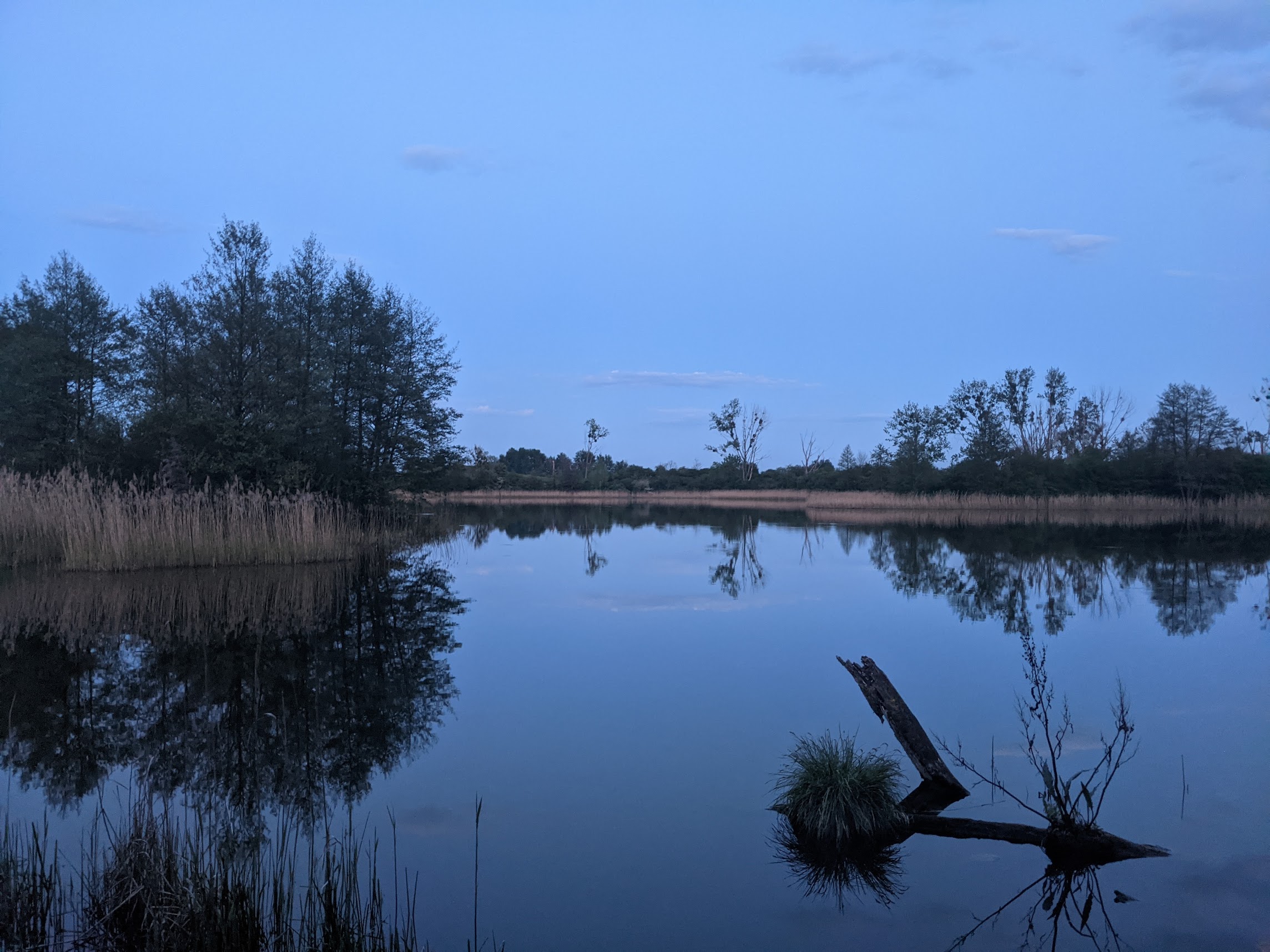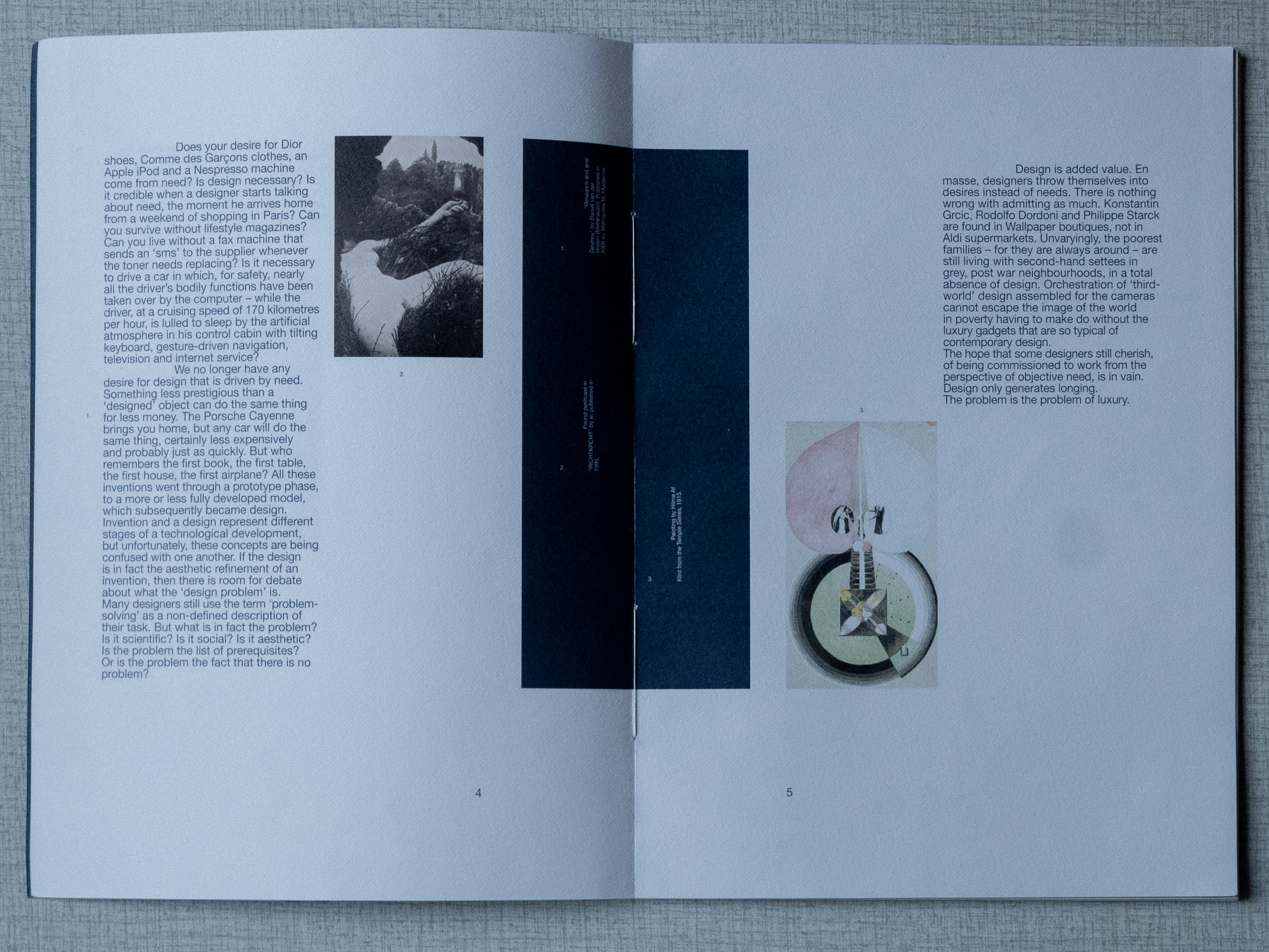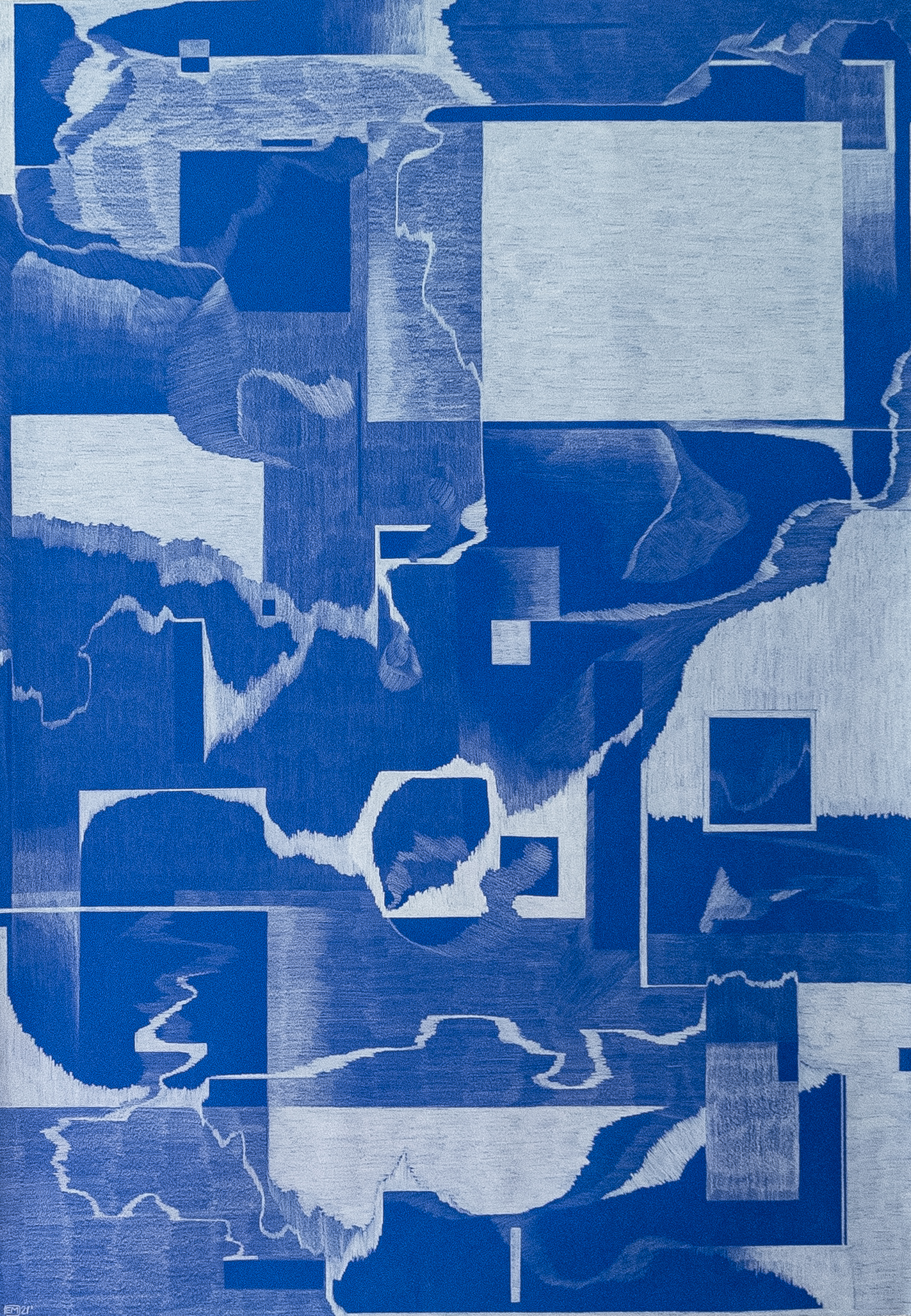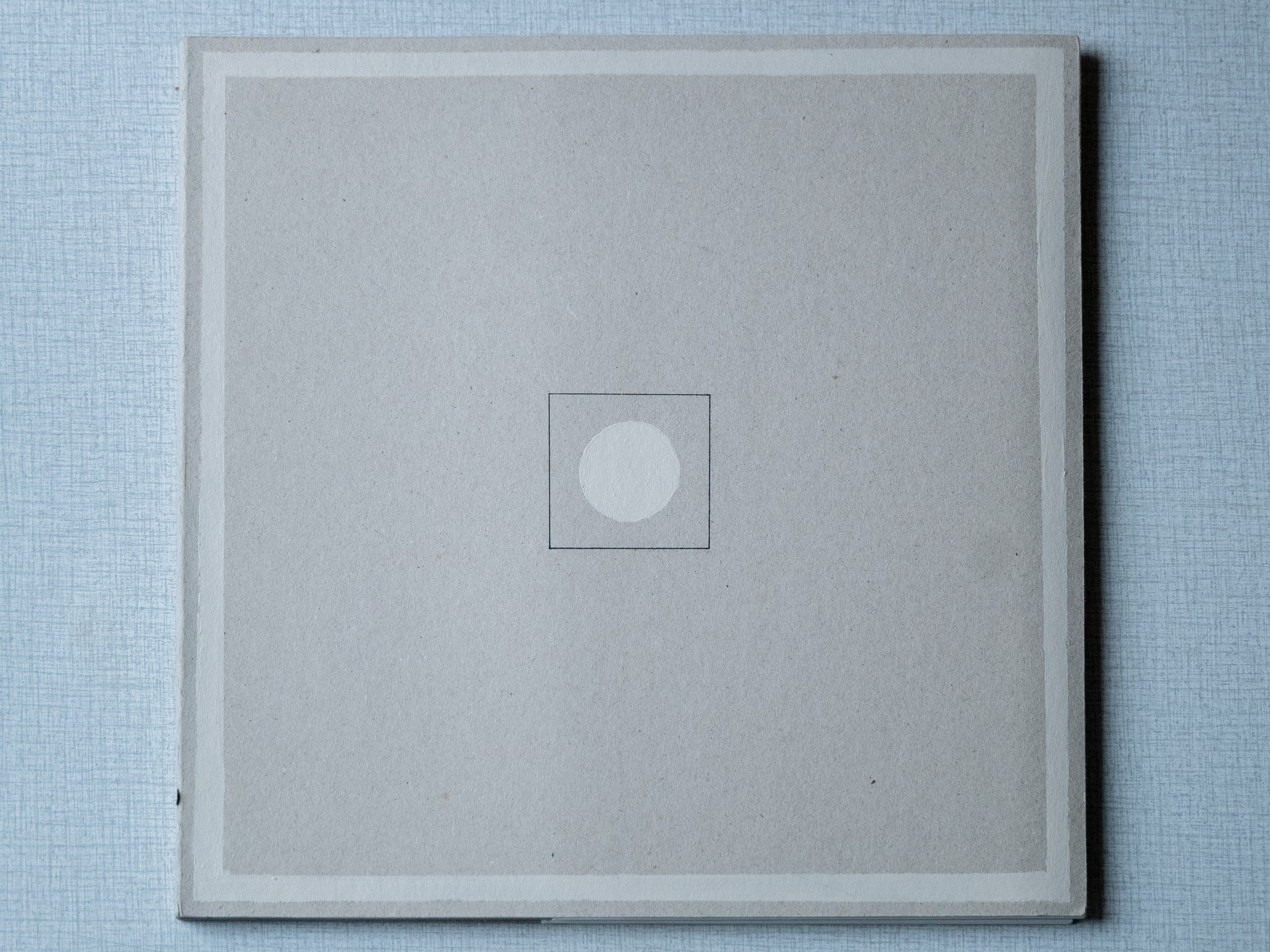( Did I spill the wine? (2024) )
Essay, publication
![]()
![]()
![]()
( Moon, water, lake (2024) )
The dissection of a memory
publication
Appendix to Did I Spill the Wine?
Poetic translation of an experience through experimental writing and psychoanalyses.
2,![]()
(2) Jezioro Wądół, PL
digital image; 2023
Essay, publication
An attempt to understand the role of the graphic designer as an ‘author’.
Reflecting on motives,ideology, politics and personal preference.
Reflecting on motives,ideology, politics and personal preference.
1, ![]()




2, ![]()
![]()
![]()



(1, 2) Did I spill the wine?; 2024
Laserprint (b&w), sewn with black yarn
Interior: Biotop 80 gr/m2
exterior: Biotop 250 gr/m2
(3) Folding, binding
Laserprint (b&w), sewn with black yarn
Interior: Biotop 80 gr/m2
exterior: Biotop 250 gr/m2
(3) Folding, binding
3 ![]()
.

.
( Moon, water, lake (2024) )
The dissection of a memory
publication
Appendix to Did I Spill the Wine?
1, ![]()

(1, 3, 4.) Moon, Water, Lake; 2024
Laserprint (b&w, true sto size), sewn with black yarn
Interior and exterior: Biotop 80 gr/m2
originally handwritten with a Parker pen in blue, extra thin and a Pentel Japan pencil in 0,5 mm on moleskine paper (with grid)
Laserprint (b&w, true sto size), sewn with black yarn
Interior and exterior: Biotop 80 gr/m2
originally handwritten with a Parker pen in blue, extra thin and a Pentel Japan pencil in 0,5 mm on moleskine paper (with grid)
Poetic translation of an experience through experimental writing and psychoanalyses.
2,

3, ![]()
![]()
![]()



(2) Jezioro Wądół, PL
digital image; 2023
3 ![]()

.
( Origins (2025) )
Clay tablet / installation
An investigation in to the origins of print: I have a fascination for ancient clay tablets and their designs. During the course “Organic Sculpture” there was room to explore a diverse range of natural materials and their meaning; borowing knowledge from alchemy, a subject that has caught my attention since my early teens. In this particular project my aim was to bring together elements form graphic design, sculpture and a hint of alchemical theory.
1, ![]()

2, ![]()


(1, 4) first stage
Clay, bronze
(2) Origins; 2025
Clay, copper, bronze, coal
140 x 50 x 35 cm
(3) process
Clay, collected material
Clay, bronze
(2) Origins; 2025
Clay, copper, bronze, coal
140 x 50 x 35 cm
(3) process
Clay, collected material
3, ![]()

4

.
( Re-writing Home (2024) )
Bachelor Thesis
1, ![]()

This visual essay explores the complex
interplay of language, culture, and identity
through the lens of my personal role as a
designer, whose upbringing was bilingual.
Reflecting on experiences of living ‘abroad’
both in Poland and the Netherlands, I try to
grasp the concept of home and the role of
language in shaping a sense of belonging.
Central to the narrative is the significance of
a multilingual dictionary, symbolising the
confluence of languages and cultures.
2,![]()
2,

3, ![]()

(1 - 5) Re-writing Home (2024)
publication, visual essay
145 x 365 mm
exterior: recystar 120 gr/m2
interior: recystar 60 gr/m2
Stapled
set in georgia
(4) ways of interaction
(5) Patrząc przesz okno— 698. / 699.
publication, visual essay
145 x 365 mm
exterior: recystar 120 gr/m2
interior: recystar 60 gr/m2
Stapled
set in georgia
(4) ways of interaction
(5) Patrząc przesz okno— 698. / 699.
4, ![]()

5 ![]()
.

.
( Visual/ material research, reflection (2024/25) )
various media
1, ![]()

2, ![]()

(1, 2) Design and mold; 2024/ 2025
form research
form research
3, ![]()

4, ![]()

(3 - 5,) Zine; 2025
visual reflection on a drawing (2023)
paper, pen, pencil print, acrylycs, yarn
visual reflection on a drawing (2023)
paper, pen, pencil print, acrylycs, yarn
5,

6,
 .
.
7 ![]() .
.
 .
. (6, 7) Notes 2024 - 2025
( A Proposal (2019) )
Poster zine / collage of text and visual language
(1 - 3) A Proposal; 2019
Poster zine
Folded: 150 x 210 mm,
unfolded: 420 x 595 mm
UV print on Satogami 90g/m2 in blue
Poster zine
Folded: 150 x 210 mm,
unfolded: 420 x 595 mm
UV print on Satogami 90g/m2 in blue
1, ![]()
![]()


2, ![]()

3,

(4, 5) Untiteled; 2019
A small booklet to collect the research for this project
4, ![]()

5 ![]()
![]()
.


.
( Perception (2023 - 2024) )
Drawings, paintings
(1) sketch 1/5; 2023
pencil on paper
1,![]()
pencil on paper
1,

2,

(2, 3) Perception; 2023 - 2024
Paintings (2/3), both 1400 x 770 mm, acryl on linen.
Paintings (2/3), both 1400 x 770 mm, acryl on linen.
3, ![]()

4, ![]()
5 - 7,![]()
![]()
![]()
(4 - 9) sketches 1-5; 2023
pencil on paper

5 - 7,



(4 - 9) sketches 1-5; 2023
pencil on paper
8, 9 ![]()
![]()
.


.
( Antonymes in blue (2021) )
Drawing
Visual [poetry]
When speaking of the blue
square as a (metaphysical) subject, the
term implicates that the blue square, that it indicates in this situation, is
an object that we can “know” and/ or it’s something we can “act” up on. The
essential characteristics of this subject are also called attributes. (Braeckman, Raymaekers,
& van Riel, 2010, p. 311) Something we have to
keep in mind, is that we can always find other ways to interact with the
subject; there’s two attributes of IKB 3 that a layman would
consider “as essential visual characteristics” to this painting. It’s blue (1) and a rectangle (2).
(1) sketches 1/3; 2021
blue pencil on white paper
(2) (visual) poetry; 2021
photography, words
1, ![]()
![]() .
. ![]()

 .
. 
2, ![]()

3 ![]()

(3) Interactions with blue nr. 4; 2021
drawing, 420x 594 mm
White pencil on Gmund Matte medium, 90 gr/m2
.
drawing, 420x 594 mm
White pencil on Gmund Matte medium, 90 gr/m2
.
( Tussen de woorden (2020) )
Publication
Publication
1, ![]()
2,![]()
3,![]()
4,![]()
5,![]()

2,

3,

4,

5,

.
Editing, collecting, writing;
image selection, design
“Tussen de woorden” (Eng: “Between the words”) is a collection of various texts by artists, writers, or anyone who wrote something that caught my eye.
When editting the text, I used white space to create a new narrative within the existing one. Every story comes with a collage
image selection, design
“Tussen de woorden” (Eng: “Between the words”) is a collection of various texts by artists, writers, or anyone who wrote something that caught my eye.
When editting the text, I used white space to create a new narrative within the existing one. Every story comes with a collage
2, ![]()
(1 - 5) Tussen de woorden (2020)
Publication, collages, words
180 x 254 mm,
exterior: hard cover, rest material, UV print
Interior: Laser print, Recystar 160 g/m2
Binding: Swiss binding, sewn and cold glued
set in Canela
.

(1 - 5) Tussen de woorden (2020)
Publication, collages, words
180 x 254 mm,
exterior: hard cover, rest material, UV print
Interior: Laser print, Recystar 160 g/m2
Binding: Swiss binding, sewn and cold glued
set in Canela
.
( A collection of friends (2020 - 2023) )
photography, collage, drawing
Over the course of three years I took pictures (5) of the dogs I encountered on the streets, I drew a selection of them.
5![]()
photography, collage, drawing
1, ![]()

(1 - 4) Drawing
500 x 700mm
pencil on Satogami 90g/m2 in white
500 x 700mm
pencil on Satogami 90g/m2 in white
3, 4, ![]()
![]()


2, ![]()

Over the course of three years I took pictures (5) of the dogs I encountered on the streets, I drew a selection of them.
5

.
( Door Röring (2019) )
Publication
Publication
1, ![]()

This publication is a visual translation of KNSM’s history, the peninsula which is named after the Royal Dutch Steamboat Company (KNSM: Koninglijke Nederlandse Stoomboot Maatschappij). Parallel to this narrative, the publication shows how one of it’s first residents, a young couple, grew out to become a family.
These days the KNSM island in the east of Amsterdam houses close to 2400 residents, and is seen by many as a serene place to live.
In the late 80’s the architect Jo Coenen was asked to design housing at this location after it was used as a harbour. His projects embraced the couple left over buildings from the KNSM-era, and refferd to the past while creating space for new things to emerge.
These days the KNSM island in the east of Amsterdam houses close to 2400 residents, and is seen by many as a serene place to live.
In the late 80’s the architect Jo Coenen was asked to design housing at this location after it was used as a harbour. His projects embraced the couple left over buildings from the KNSM-era, and refferd to the past while creating space for new things to emerge.
2, ![]()

(1 - 3) Door Röring; 2019
297 x 210 mm
ex/in- terior: Papyrus 120g/m2
Laser print, riso
Binding: black elastic
publication, archival research
ex/in- terior: Papyrus 120g/m2
Laser print, riso
Binding: black elastic
3

.

Together with four classmates, and two students Cultural Anthropology, we’ve started Ginkgo Collective in the beginning of 2020.
I was responsible for the concept-development and research, buisness strategy and copywriting. Together with the whole team we’ve created content such as podcasts, interviews and collages.
Team:
Anke Verbeek
Juul van der Zandt
Valentino Angela
Annemijn Catshoek
Esmee Jakubowski
In partnership with KunstOnderzoek
Website
Instagram
Our mission and vision:
Ginkgo is a place for dialogue between (aspiring) scientists and artists to explore their meaning of research through dialogue: we are looking for people to explore an open language with us!
Ginkgo offers a platform where dialogues can take place, a space where you can find and add references coming from your own discipline and a place for asking questions when you don’t know where to start looking for an answer. For the moment our platform is still online, but in the future we’d like to create a magazine that continues the online conversation and gives designers, artists, scientists, and writers the opportunity to publish their common thoughts: Our fuel is curiosity!
Anke Verbeek
Juul van der Zandt
Valentino Angela
Annemijn Catshoek
Esmee Jakubowski
In partnership with KunstOnderzoek
Website
Our mission and vision:
Ginkgo is a place for dialogue between (aspiring) scientists and artists to explore their meaning of research through dialogue: we are looking for people to explore an open language with us!
Ginkgo offers a platform where dialogues can take place, a space where you can find and add references coming from your own discipline and a place for asking questions when you don’t know where to start looking for an answer. For the moment our platform is still online, but in the future we’d like to create a magazine that continues the online conversation and gives designers, artists, scientists, and writers the opportunity to publish their common thoughts: Our fuel is curiosity!
Who are we?
Ginkgo’s core consists of seven aspiring professionals in graphic design and cultural anthropology and development sociology: through some philosophy, trust, a big interest in interdisciplinarity and an open mind we try to bring people together. We are continuously refining and building our platform with the ideas and expertise of professionals such as professors, artists, designers, but most importantly students themselves. We believe that art and science might be seen as parallels and that meeting in the middle is seen as something quite impossible. However, we believe putting the two together could lead to new approaches of research, perceptions, collaborations, discussions and resources.
As students, mistakes can be made without any big consequences. So look at Ginkgo as if it were a playground. Here you can play with things you cannot find in your own discipline, but yet seek feedback and help from other students and experts from different fields of knowledge and translate this to your personal practice.
Our aim is to find the synthesis we call Ginkgo: approaching knowledge that’s not goal directed, neither exploratory based, but just takes the good stuff from science and art in all its forms while it still respects the core identity of each discipline and each person.
What do we stand for?
As a platform, we value trust, open mindedness, acknowledgment, adequate sources of information, your values as a person and as a professional, transparency, constructive feedback, understanding and honesty: a safe space where mistakes can be made.
As a part of our community we ask you to stay open minded, try to look at structures of thinking beyond your own and give attention to the way such structures are created. We encourage members to trust this open space and to engage in new learning possibilities by meeting new people and ideas.
Stay true to yourself and your profession while enjoying a conversation with someone that has an opposite approach: Welcome to a place behind the parallel where we’d like to meet on an open ground.


.
( Tolhuistuin - Sunday Sounds (2019) )
Identity
Identity
For the identity of this event I took photographs of the plants and flowers from the Tolhuis “tuin” (garden). When making this poster i’ve focussed on rythm, contrast and a natural looking finish which I achieved by using riso print
1

(1) Tolhuistuin - Sunday Sounds; 2019
297 x 420
mm
Riso, collage, photography, typography
mm
Riso, collage, photography, typography
.
( Throwing a dice on a mirror (2019) )
Publication
Publication
1,


2, ![]()
3,![]()

3,

(1 - 4) Throwing a dice on a mirror (2019)
Game/ manifesto
330 x 330 mm,
Interior: Laser print, Papyrus 120g/m2,
Glass Mirror (300 x 300 mm)
Hand painted cartboard, acrylics
Cover: Hand painted cartboard, acrylics
Binding: Cold glue
set in georgia
4

.
( 301014 101018 (2018) )
Publication
Publication
1, ![]()

A small collection of texts and scans from a notebook.
2, ![]()
![]()
(1 - 4) 301014 101018 (2018)
publication
148 x 210 mm,
in/ex- terior: laser print,
Recystar 120 g/m2, Cromatico transwhite 110 g/m2
Stapled


(1 - 4) 301014 101018 (2018)
publication
148 x 210 mm,
in/ex- terior: laser print,
Recystar 120 g/m2, Cromatico transwhite 110 g/m2
Stapled
3 ![]()

.